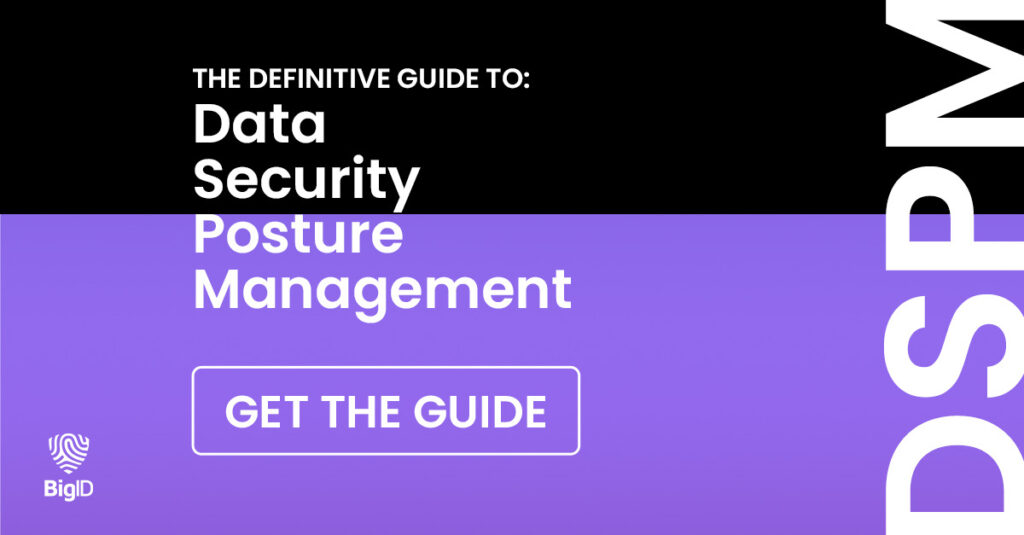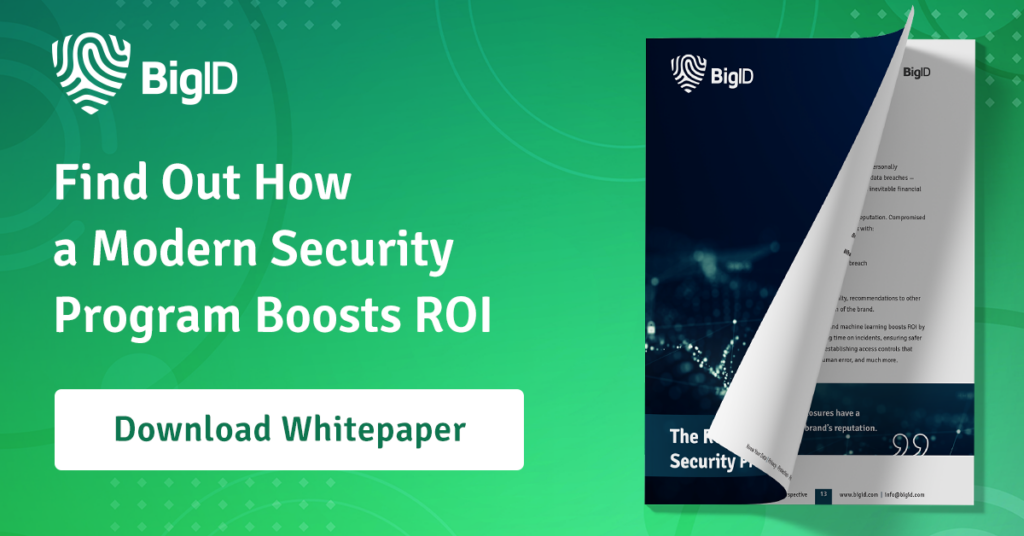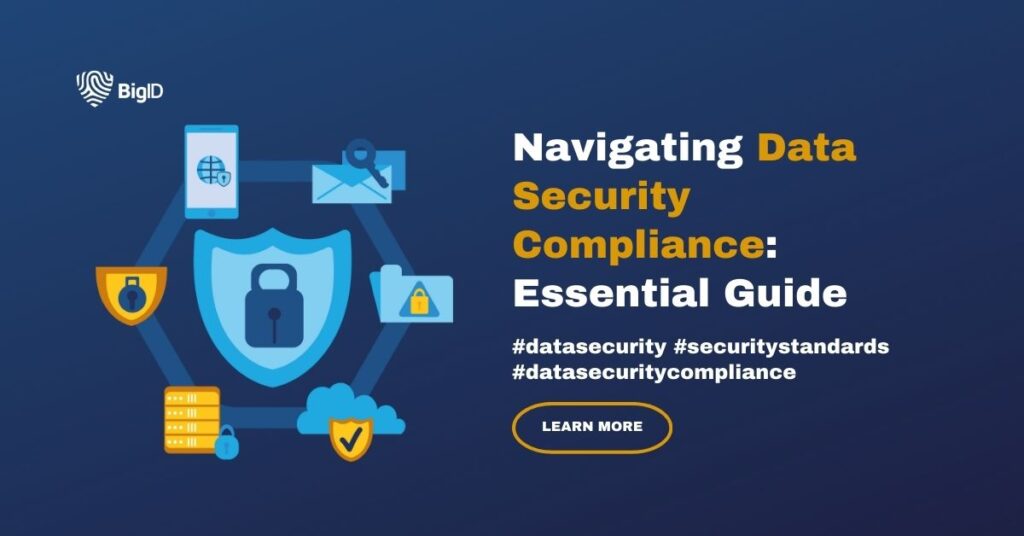There is no single industry that can get by without a dedicated data security compliance program— not in today’s hyper-connected digital world that is. With the ever-growing volume of data generated and stored, coupled with the rapid advancement of technologies like artificial intelligence (AI), maintaining a secure data posture has become increasingly complex. Read on to explore the challenges organizations face internally, both on-premises and in the cloud, the regulations and frameworks they must adhere to, and practical strategies to enable robust data security and compliance.
The Evolution of Data Security Compliance
As the detailed work of businesses moved off the paper and onto the computer, the landscape of data security compliance underwent a significant transformation. While traditional methods such as firewalls and antivirus software were once sufficient, the rise of cloud computing, mobile devices, and AI has introduced new challenges.
AI, in particular, has revolutionized how organizations handle data. While it offers immense opportunities for innovation and efficiency, it also presents unique security risks. AI-powered systems can analyze vast amounts of data in real-time, making them attractive targets for cybercriminals. Additionally, AI algorithms themselves can be vulnerable to manipulation or bias if not properly managed, raising concerns about data integrity and privacy.
Common Data Security Compliance Challenges
From the complexities of managing diverse IT infrastructures to the constant evolution of regulatory requirements, navigating the maze of data security compliance presents a formidable task for organizations of all sizes and industries. Some common barriers include:
Complexity of Infrastructure
With the proliferation of cloud services and hybrid environments, organizations often struggle to maintain visibility and control over their data. Managing security across diverse platforms and environments requires robust governance frameworks.
Example: A multinational corporation utilizes a combination of on-premises servers, public cloud services, and edge computing devices to support its operations. Ensuring consistent security standards across this complex infrastructure proves challenging, as each environment may have different compliance requirements and configurations.
Insider Threats
While external cyber threats often make headlines, insider threats pose a significant risk to data security. Whether intentional or unintentional, employees can compromise sensitive information through negligence, malicious intent, or exploitation by external actors.
Example: A disgruntled employee with access to privileged information leaks confidential customer data to a competitor, causing reputational damage and potential legal consequences for the organization.
Regulatory Compliance
Organizations must navigate a complex web of regulations and frameworks governing data security and privacy, such as GDPR, HIPAA, CCPA, and PCI DSS. Failure to comply with these regulations can result in severe penalties, including fines and legal liabilities.
Example: A healthcare provider collects and stores patient information electronically. To ensure compliance with HIPAA regulations, the organization implements encryption measures, access controls, and regular audits to safeguard sensitive medical records from unauthorized access or disclosure.

Meeting Data Security Standards
Data security compliance standards are established guidelines and regulations that organizations must adhere to in order to protect sensitive data and ensure its confidentiality, integrity, and availability. These standards are enforced by various regulatory bodies and industry organizations. Here are some of the key data security compliance standards and their respective enforcers.
- General Data Protection Regulation (GDPR): Enforced by the European Data Protection Board (EDPB), GDPR mandates strict guidelines for the collection, processing, and storage of personal data. Organizations handling EU citizens’ data must obtain explicit consent, implement data protection measures, and notify authorities of data breaches within 72 hours.
- Health Insurance Portability and Accountability Act (HIPAA): Enforced by the U.S. Department of Health and Human Services (HHS), HIPAA sets standards for protecting sensitive patient health information (PHI) and requires healthcare organizations to safeguard electronic PHI (ePHI) through encryption, access controls, and audit trails.
- Payment Card Industry Data Security Standard (PCI DSS): Enforced by Payment Card Industry Security Standards Council (PCI SSC), PCI DSS outlines security requirements for organizations that process, store, or transmit credit card data. Compliance involves implementing network firewalls, encryption, and regular vulnerability assessments to protect cardholder information.
- ISO/IEC 27001: Enforced by self-assessment and external auditors, ISO/IEC 27001 is an international standard for information security management systems (ISMS). It provides a framework for organizations to establish, implement, maintain, and continuously improve their information security management practices. ISO/IEC 27001 certification demonstrates compliance with rigorous security controls and risk management processes.
- Sarbanes-Oxley Act (SOX): Enforced by the U.S. Securities and Exchange Commission (SEC), SOX is a federal law in the United States that sets requirements for corporate governance, financial reporting, and internal controls to protect investors and prevent accounting fraud. Section 404 of SOX mandates internal controls over financial reporting (ICFR) to ensure the accuracy and reliability of financial statements. SOX compliance includes controls related to data security and integrity.
- California Consumer Privacy Act (CCPA): Enforced by the California Attorney General’s Office, CCPA is a state law in California, USA, that grants consumers certain rights regarding the collection, use, and sale of their personal information by businesses. It applies to businesses that collect personal information of California residents and meet specific criteria related to revenue or data processing volume. CCPA requires businesses to provide transparency about data practices, offer opt-out mechanisms, and implement security measures to protect consumer data.
Enabling Secure Data Posture
Achieving and maintaining data security compliance requires a holistic approach that addresses technical, procedural, and cultural aspects of cybersecurity. Here are some strategies to simplify and enhance data security posture:
Risk Assessment and Management
Conduct regular risk assessments to identify vulnerabilities and prioritize mitigation efforts based on potential impact and likelihood of exploitation. Implement risk management frameworks such as NIST Cybersecurity Framework or ISO/IEC 27001 to guide security initiatives.
Example: A financial institution performs a comprehensive risk assessment to identify threats to its online banking platform. Based on the assessment findings, the organization strengthens authentication mechanisms, implements fraud detection algorithms, and conducts regular security audits to mitigate risks associated with online transactions.
Employee Training and Awareness
Invest in cybersecurity training programs to educate employees about security best practices, data handling procedures, and the consequences of security incidents. Foster a culture of security awareness where employees understand their role in protecting sensitive information.
Example: A technology company conducts regular security awareness workshops for employees, covering topics such as phishing awareness, password hygiene, and safe browsing habits. By empowering employees with the knowledge to recognize and respond to security threats, the organization reduces the risk of insider incidents and data breaches.
Continuous Monitoring and Incident Response
Deploy security monitoring tools to detect anomalous behavior, unauthorized access attempts, and potential security incidents in real-time. Establish an incident response plan outlining procedures for containing, investigating, and mitigating security breaches promptly.
Example: A telecommunications provider implements a Security Information and Event Management (SIEM) system to monitor network traffic, log activities, and correlate security events across its infrastructure. In the event of a suspected breach, the organization follows predefined incident response protocols to isolate affected systems, gather forensic evidence, and notify relevant stakeholders.
The Benefits of Data Security Compliance
The Return on Investment (ROI) of data security compliance refers to the tangible and intangible benefits that organizations derive from investing in measures to protect sensitive information and adhere to regulatory requirements. While the upfront costs of implementing data security controls and compliance initiatives may seem significant, the long-term benefits can be substantial. Here’s a simple breakdown of the benefits of data security compliance.
- Protection of Sensitive Information: By safeguarding sensitive data from unauthorized access, theft, or manipulation, organizations reduce the risk of financial loss, reputational damage, and legal liabilities associated with data breaches. The value of protecting confidential customer information, proprietary business data, and intellectual property far outweighs the costs of implementing security measures.
- Mitigation of Security Risks: Investing in data security compliance helps mitigate the risks of cyber threats, such as malware, ransomware, phishing attacks, and insider threats. Proactive measures such as encryption, access controls, and security monitoring reduce the likelihood and impact of security incidents, minimizing potential downtime, loss of productivity, and financial repercussions.
- Compliance with Regulatory Requirements: Non-compliance with data protection regulations and industry standards can result in hefty fines, legal penalties, and damaged reputation for organizations. By adhering to regulatory requirements such as GDPR, HIPAA, PCI DSS, and others, businesses avoid costly sanctions and maintain trust with customers, partners, and regulatory authorities.
- Enhanced Trust and Reputation: Demonstrating a commitment to data security and compliance fosters trust and confidence among stakeholders, including customers, investors, and business partners. Positive brand reputation and credibility can lead to increased customer loyalty, competitive advantage, and opportunities for growth and expansion in the marketplace.
- Operational Efficiency and Cost Savings: Implementing efficient data security and compliance processes streamlines operations, reduces administrative overhead, and minimizes the risk of data breaches and associated remediation costs. Automation of security tasks, centralized management of security controls, and standardized compliance procedures optimize resource allocation and drive cost savings over time.
- Competitive Advantage: In today’s highly competitive business environment, organizations that prioritize data security and compliance gain a strategic edge over their peers. By differentiating themselves as trustworthy and reliable stewards of customer data, they attract customers who prioritize privacy and security, positioning themselves for long-term success and sustainability.

BigID’s Approach to Data Security Compliance
Data security compliance is an ongoing challenge for organizations operating in today’s digital landscape. With the rapid growth of data and the introduction of AI technologies— maintaining a secure data posture requires a multifaceted approach that addresses evolving threats, regulatory requirements, and internal vulnerabilities. BigID is the industry leading platform for data security, privacy, and governance that offers advanced capabilities for deep data discovery, data protection, and classification.
With BigID you get:
- Data Discovery and Classification: BigID utilizes advanced AI and machine learning techniques to scan, discover, and classify data in all of its stored forms—structured and unstructured— both on prem and in the cloud. Get the power to identify where all your sensitive enterprise data resides and gain valuable context through automated discovery and classification.
- DSPM on Demand: Data security posture management offers data security for the multi-cloud and beyond. BigID implements cloud-native data centric security for organizations at scale. Accurately discover your crown-jewel; data and take proactive steps to safeguard it by reducing your attack surface and constantly monitoring your security posture.
- Risk Assessment and Mitigation: BigID’s Risk Scoring App enables your organization to establish a single source of truth and define risk based on specific attributes of your sensitive data. Gain a better understanding of your security risk and the associated steps to improve your security posture.
- Data Breach and Incident Response: In the event of a data breach, every second counts— with BigID’s Breach Data Investigation App, skip the guesswork and quickly identify the scope of all your compromised data and immediately tailor a remediation response. Easily ensure compliance with breach notification timelines by generating exposure reports for regulators.
To see how BigID can help you better protect your data and maintain compliance—schedule a 1:1 demo with our security experts today.



